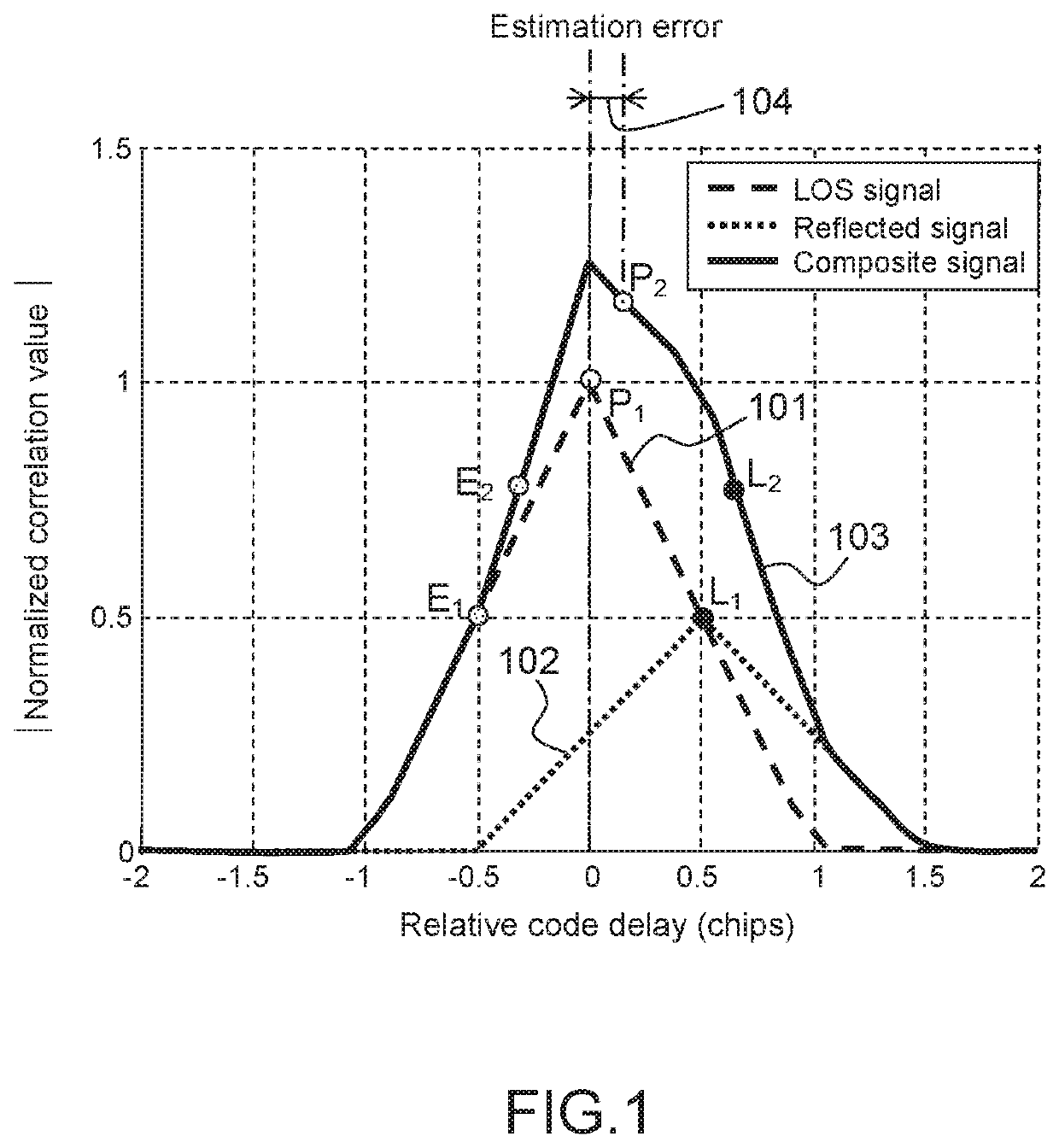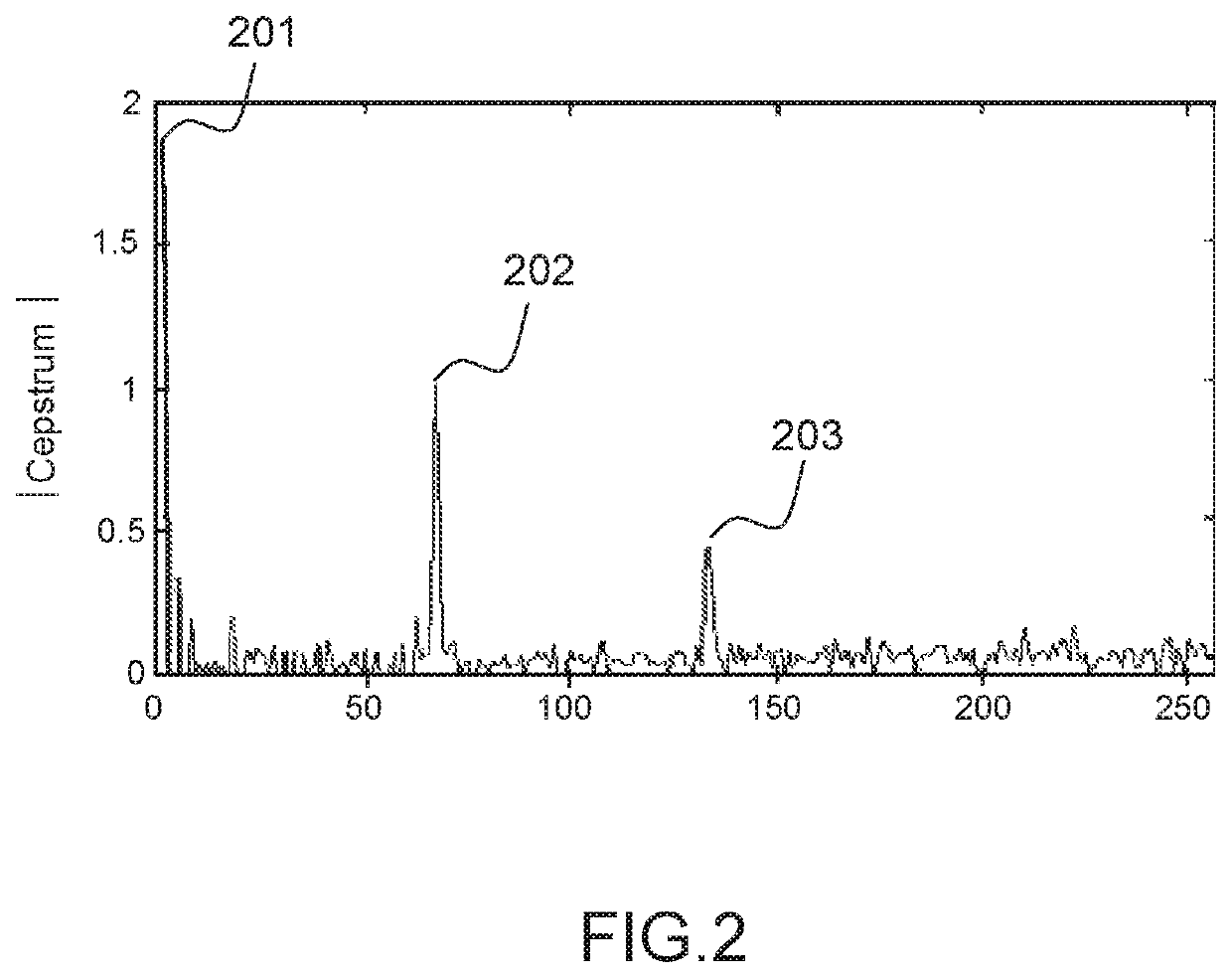Cepstrum-based multipath mitigation of a spread spectrum radiocommunication signal
a spread spectrum radiocommunication and multipath mitigation technology, applied in satellite radio beaconing, measurement devices, instruments, etc., can solve the problems of affecting the quality of the overall estimate, affecting the accuracy of positioning, and reducing the quality of the synchronization position determined, so as to achieve the effect of mitigating the effects of multiple paths
- Summary
- Abstract
- Description
- Claims
- Application Information
AI Technical Summary
Benefits of technology
Problems solved by technology
Method used
Image
Examples
Embodiment Construction
[0042]FIG. 1 describes the effects of multiple paths reflections on a correlation performed on a GNSS signal received in a receiver according to prior art.
[0043]In what follows, and for illustration purposes, the figures will refer to a positioning signal transmitted using a BPSK modulation, but the invention applies equally over a positioning signal transmitted using a BOC modulation, or any other relevant modulation using spreading.
[0044]The receiver correlates the received signal with at least one local replica of the positioning signal. The local replica is generated considering the signal originating from one satellite and the PRN code associated, plus a local time reference of a tracking loop associated to this signal. This operation is performed in a tracking loop of the received signal, the aim of the tracking loop being to:[0045]isolate the signal coming from one particular GNSS transmitter, thanks to the PRN code used to modulate the navigation message contained in the pos...
PUM
 Login to View More
Login to View More Abstract
Description
Claims
Application Information
 Login to View More
Login to View More - R&D
- Intellectual Property
- Life Sciences
- Materials
- Tech Scout
- Unparalleled Data Quality
- Higher Quality Content
- 60% Fewer Hallucinations
Browse by: Latest US Patents, China's latest patents, Technical Efficacy Thesaurus, Application Domain, Technology Topic, Popular Technical Reports.
© 2025 PatSnap. All rights reserved.Legal|Privacy policy|Modern Slavery Act Transparency Statement|Sitemap|About US| Contact US: help@patsnap.com



